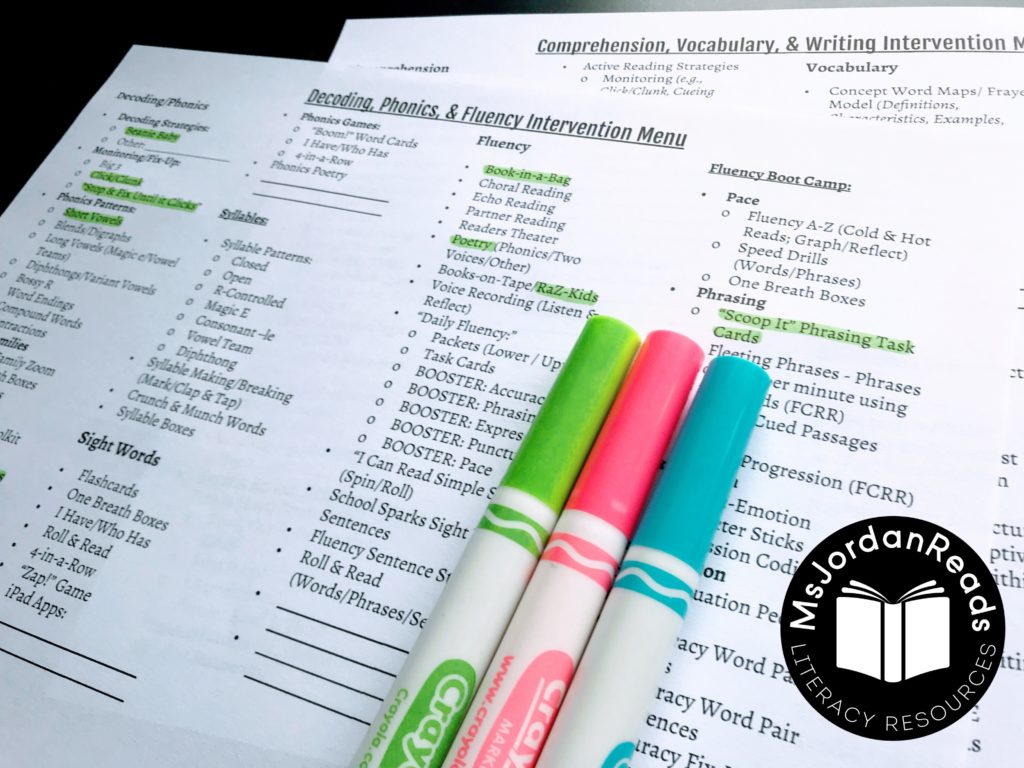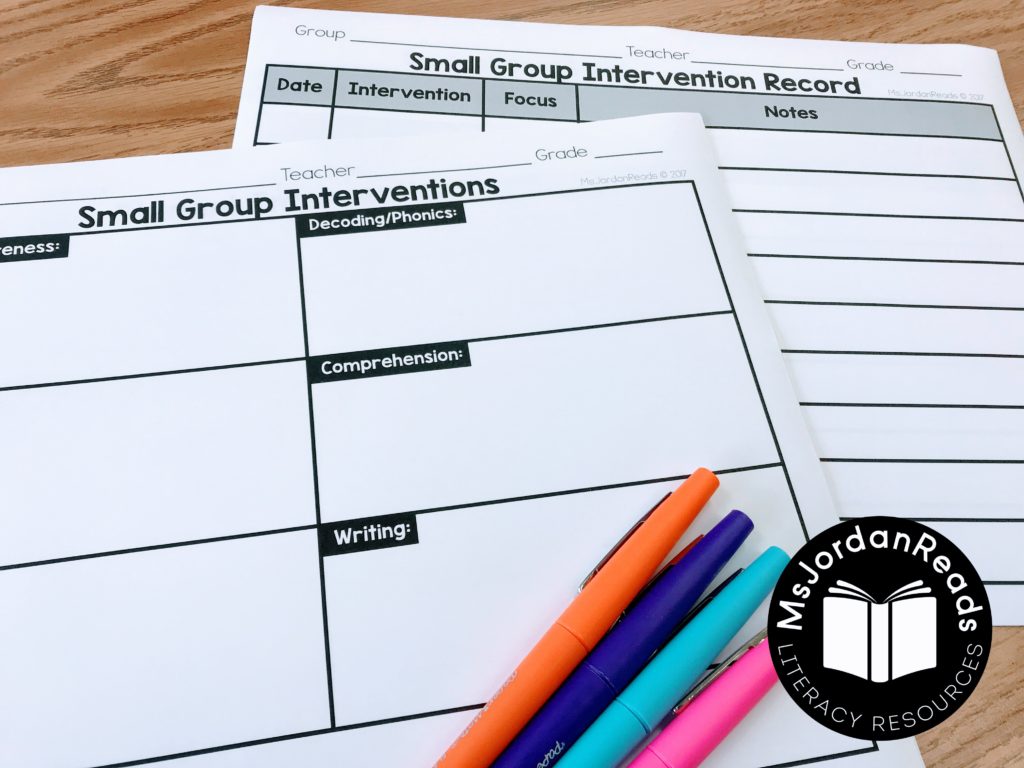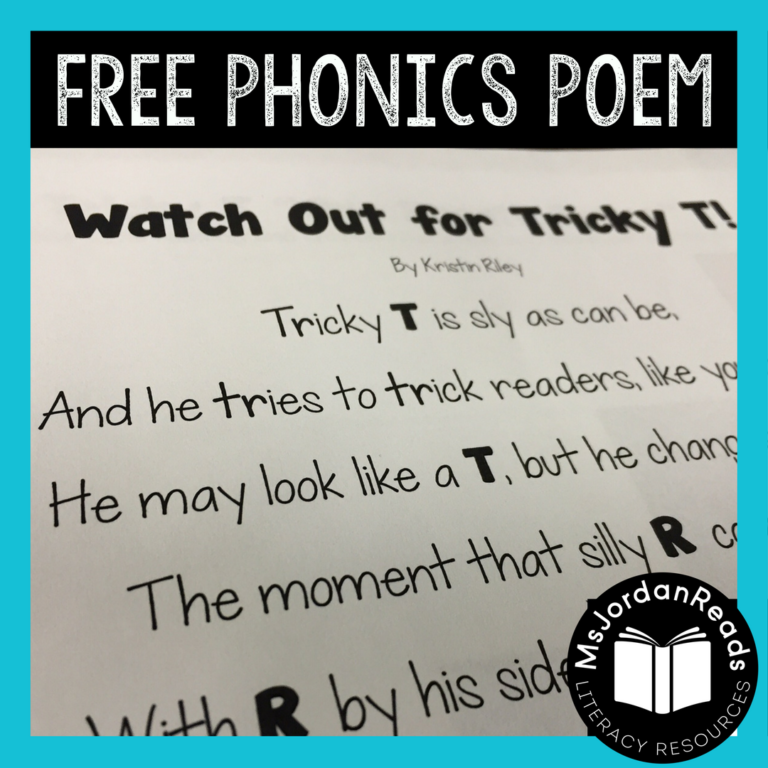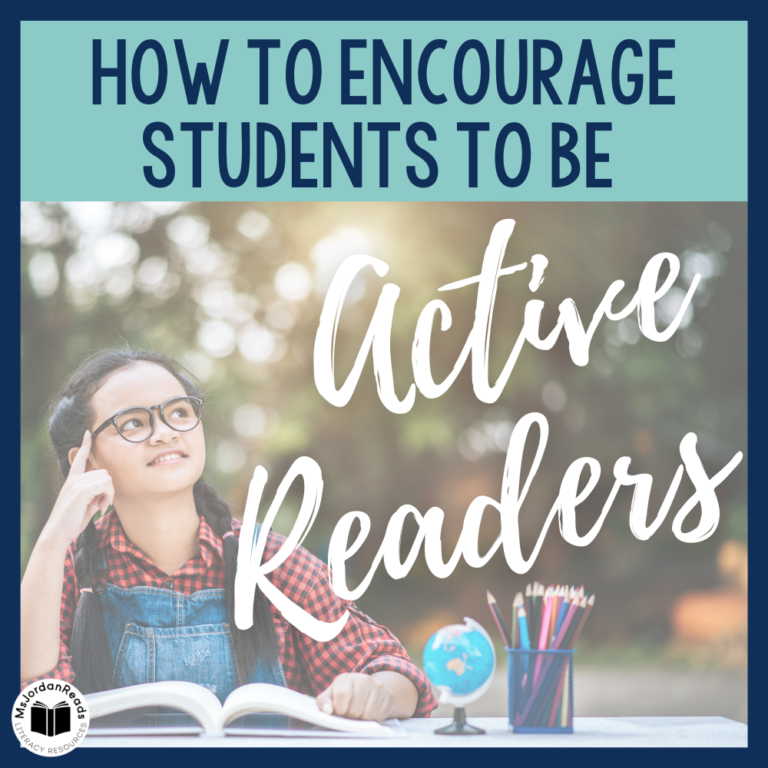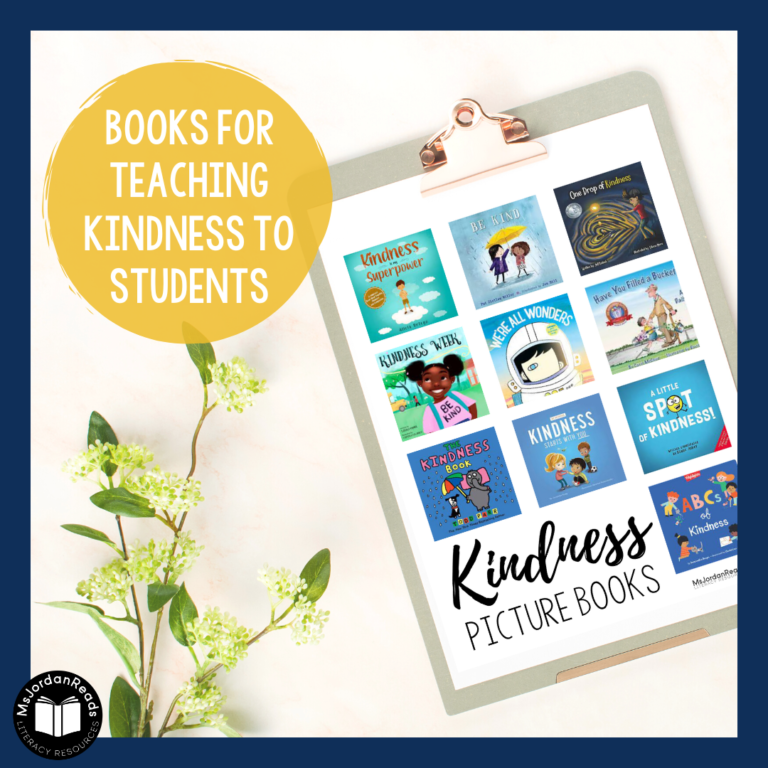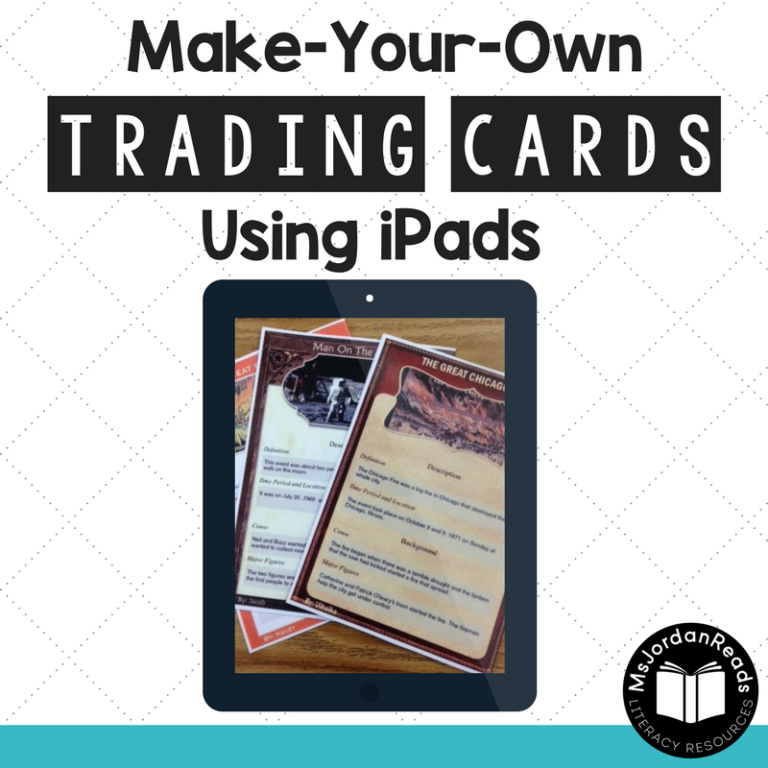3 Ways to Use Intervention Menus for Small Group Reading
How do you plan for your small group instruction? Do you follow a program where all students receive the same strategies, or do you customize the interventions you teach to meet the needs of your students?
As a Literacy Specialist, my students are placed into flexible, target-specific reading groups based on multiple assessments at the beginning of the year. Our pull-out program is very flexible, so targets and groups often change as students make progress and meet their goals. We do not have a formal reading program for every group, so it’s up to each interventionist to determine targets, goals, and interventions. Similar to classroom teachers who use “strategy groups” for guided reading, we provide interventions that focus on specific targets (i.e., decoding, fluency, comprehension, etc.).
To plan for these groups, our Reading team typically designs a custom intervention program for each of our groups using various research-based strategies we know to be effective. This ensures that each student is receiving target-specific, individualized instruction to meet their needs. For my own groups, I choose these interventions from a growing collection of tools and strategies in my “literacy toolbox.” I usually review the same core strategies, but then the interventions for the following months are determined based on student progress and achievement.
What is an Intervention Menu?
An “intervention menu” is essentially a written inventory of strategies and skills teachers can use to target specific areas of reading and writing in their instruction.
My intervention menu is an evolving digital document that lists many different tools, skills, and strategies I’ve collected over the years. I store it on Google Drive as a live document and update it each year with strategies I find to be effective and that I use the most. Keep in mind, my intervention menu may look very different from your intervention menu! My menu reflects the grade-levels I teach (grades 2-5) and the resources I have available in my school. It also reflects interventions I’ve designed for my students to use. (NOTE: There are MANY reading strategies and skills not listed on this menu. It is not an all-inclusive list, by any means!)
3 Ways to Intervention Menus
Intervention menus are perfect for interventionists AND classroom teachers interested in planning or recording small group intervention strategies. There are many uses for an intervention menu, whether you’re working with students 1:1 or in small groups, and it can easily be modified to meet your needs.
Group Planning
I often use this product at the beginning of the school year to plan out my instruction. With student goals and targets in mind, I select a few strategies that I want to start with. To make it more visual, I highlight these beginning of the year strategies on my intervention menu and then use it as a checklist to help guide my lessons.
As the year continues, I sit down each month a look at my intervention menu to decide where I want to go with my instruction. Of course, the scope & sequence of the strategies I want to teach may change as I get to the know the students better or their reading needs change, but it really helps me stay organized and intentional with my teaching. The best part is, I don’t have to dig into my file cabinet of resources or sift through mental list of interventions to decide which strategies to start with. I can just look at my menu and form a plan!
To give you an idea of how I use my intervention menu for planning… there are common strategies I always review with my upper grade readers before diving into their specific reading needs. After a long summer, a review of what’s already in our literacy toolboxes is a must. Plus, it gives me an opportunity to assess which students aren’t applying these previously learned strategies automatically and may need extra support.
For example, with my fourth grade comprehension groups, I typically start with a review of monitoring our reading using the “Big 3” questions and Click/Clunk self-monitoring strategy. We discuss fix-up strategies, and I model how to chunk our reading so we can stop and check our understanding. For me, these are “must have” strategies that we build upon throughout the year. If they don’t have these strategies mastered, I will spend some time reviewing and practicing.
Intervention Recording
Another way I use an intervention menu is for tracking the interventions the students are learning. This is helpful to me in many ways. Not only can I use it as a record of instruction, but I can refer to it for parent conferences, data discussion days, and collaboration with the students’ classroom teachers. It’s especially helpful for committee meetings, like if a child is brought to a child study or is referred for special education services.
For tracking my interventions, I typically use a different color for recording interventions taught each trimester. You can use the same form as your planning form, or use a different one. I tend to use the same one so I’m not highlighting strategies twice and making more work for myself. It provides me with an “at a glance” inventory of what’s in their literacy toolbox for the year.
Throughout the year, this menu is kept in my data binder and at the end of the year, I file it in my students’ reading folders. What’s really nice is that other members of my Reading team are starting to use an intervention menu, too, so when I receive one of their students from the previous year, I know what strategies the student should already have in his/her Literacy Toolbox. It provides me with a starting point for instruction and allows me to develop a list of strategies to review and teach for the year.
Student Goal Setting
A final way I use the intervention menu is for student goal setting. Within my targeted groups, I like to set specific goals that each individual student can work toward. I use the intervention menu to choose strategies and interventions that will help them achieve their goals by the end of the year. I record student goals on a goal sheet and use informal progress monitoring to keep track of student progress toward his/her individual goal. Students can even record each strategy they learn on their own recording sheets, giving them ownership over their learning.
Creating Your Own Intervention Menu
You can easily create your own intervention menu using any word-processing program. If you want to fit it on one page, I would recommend creating a multi-column chart and organizing it by reading focus area. You can choose between bullets or checkboxes to list the interventions you have in your own literacy toolbox. You can print it out or use it digitally, depending on how you plan or organize your small group reading instruction.
Want to see a sample menu? Check out a sample intervention menu that I use HERE (this does not include any of the free forms below – you’ll need to subscribe to access those!). (If you’re already a subscriber, you may download the resource HERE.)
(NOTE: The editable version is a Google Doc but you can download it as a Microsoft Word document. You may remove/add interventions that fit your needs. Formatting may be altered when you convert to .)
Additional Resources
Looking for additional resources? Check out the Intervention Planning & Recording Forms in my store! These are great for those of you who don’t wish to use an intervention menu but still need a way to track interventions or jot down intervention plans for your groups. There are two versions of every page, “student” and “small group,” so that you can use what works best for you!
Want a FREE sample? Become a subscriber to MsJordanReads Literacy Resources using the form below, and I will send you a sample of small group planning and tracking forms to try out! (If you’re already a subscriber, you may download the resource HERE.)
—



